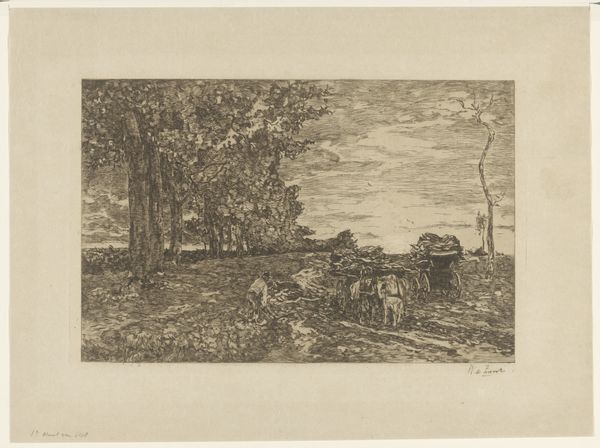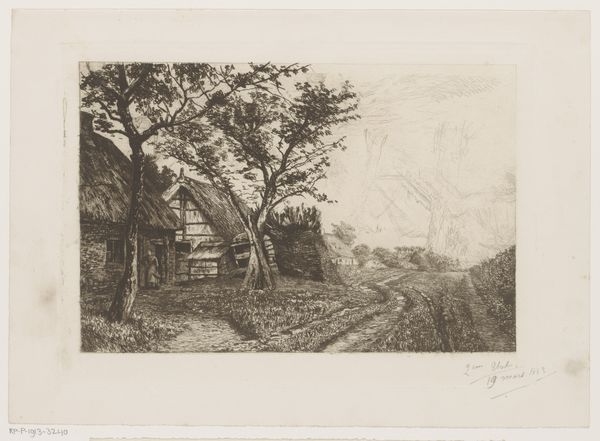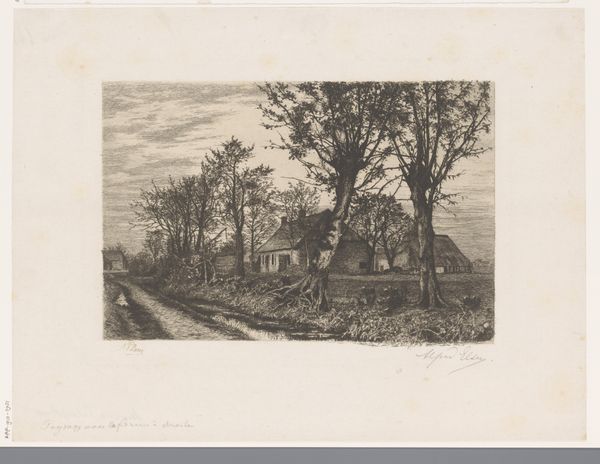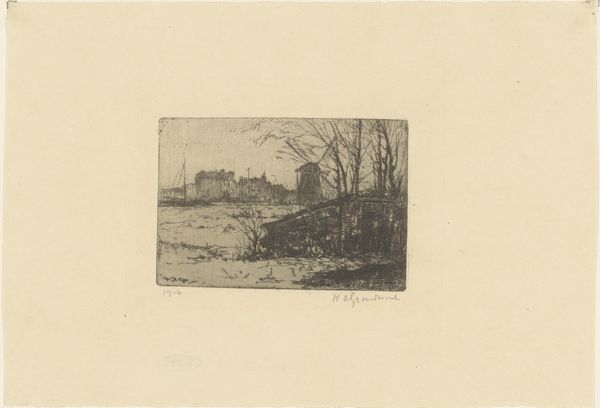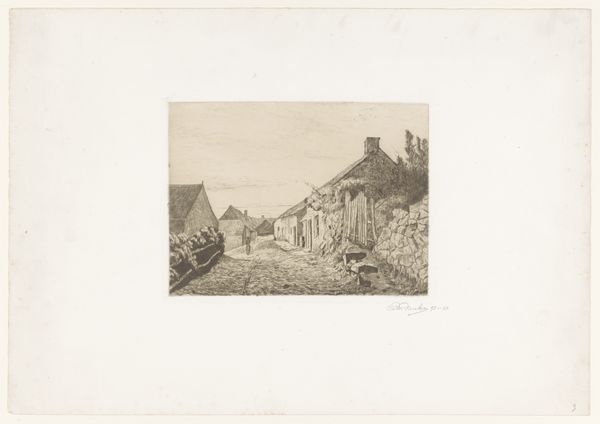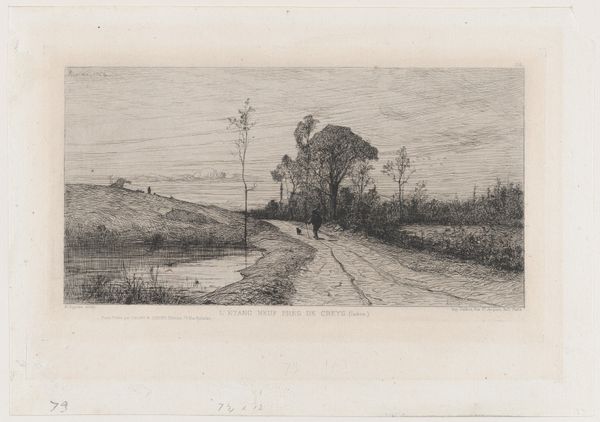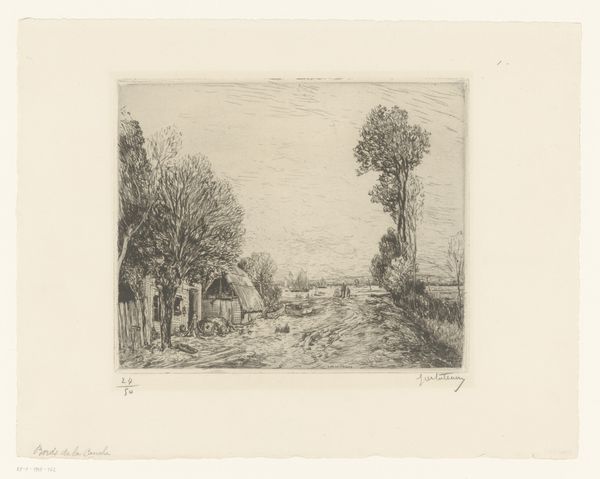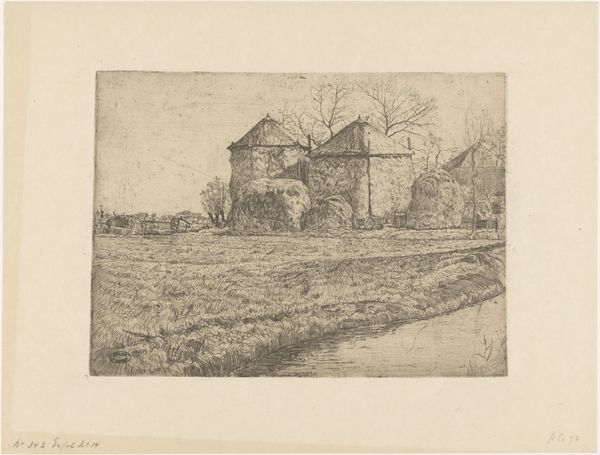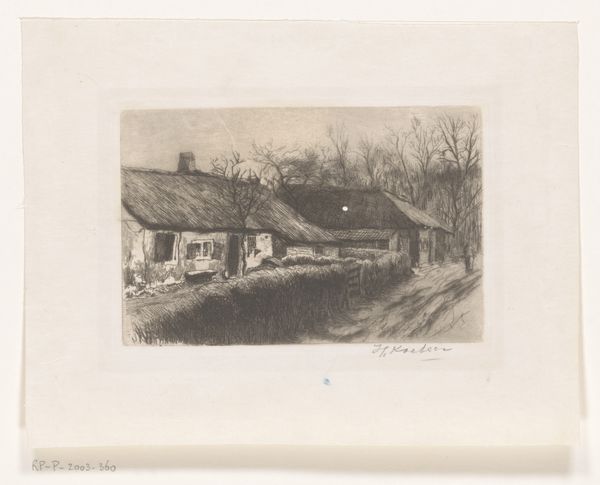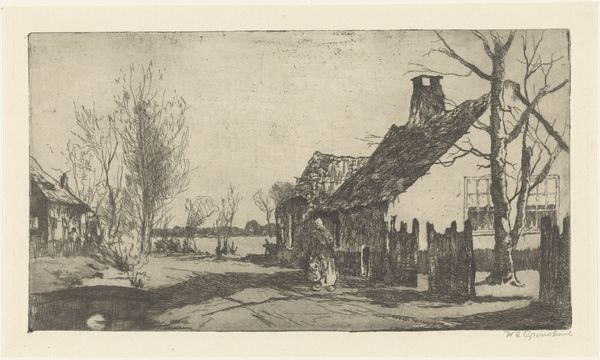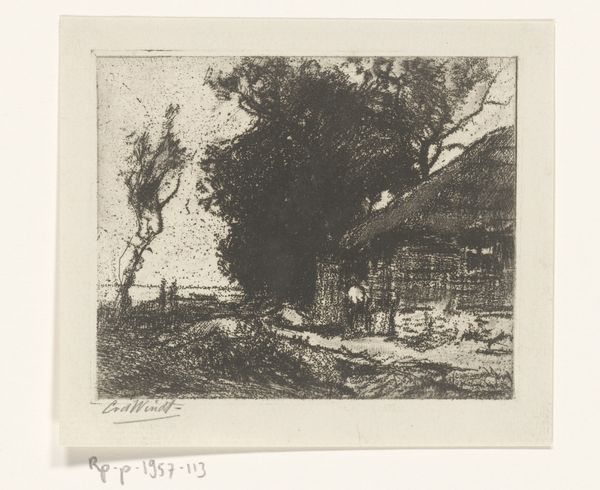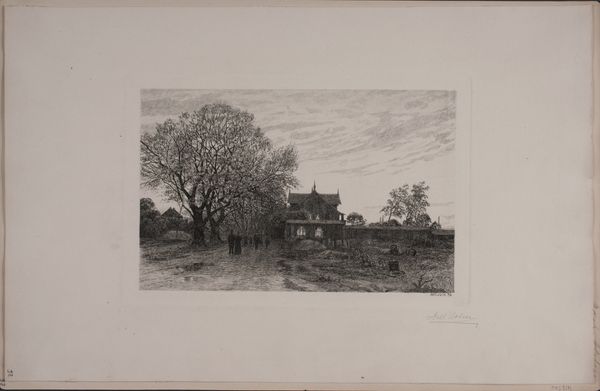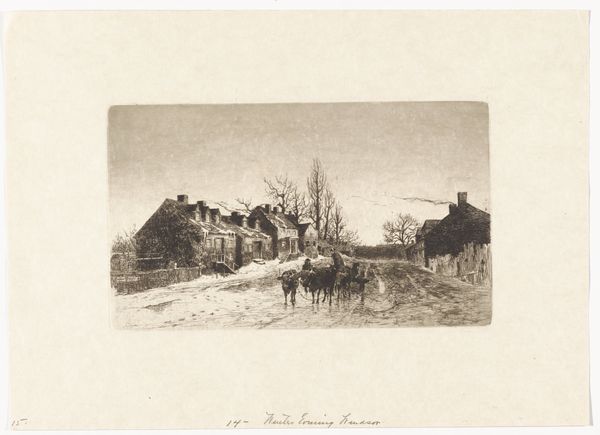
drawing, print, etching, paper
#
tree
#
drawing
#
16_19th-century
# print
#
etching
#
landscape
#
house
#
paper
#
cityscape
#
genre-painting
#
street
#
realism
Dimensions: Plate: 9 7/16 × 15 9/16 in. (24 × 39.5 cm) Sheet: 12 7/8 × 18 1/4 in. (32.7 × 46.3 cm)
Copyright: Public Domain
Adolphe Appian etched "Village Street in Artemare (Ain)" to be seen, felt, and remembered. Central to this industrial-age village are bare trees, laden with cultural meaning. The motif of trees has long been used to represent a connection between heaven and earth, as seen in ancient mythologies. Here, the bare branches suggest a starkness, hinting at the end of a cycle, a season of rest. This imagery appears throughout art history, in Northern Renaissance paintings, for example, where leafless trees often symbolize death or spiritual barrenness, a motif carried through time. But observe the subtle shift: Appian’s trees, while bare, possess a certain resilience. They remind us that even in the depths of winter, life persists, dormant yet full of potential. This reflects a universal psychological theme: the cyclical nature of hope and despair, constantly playing out in the human psyche. Consider how this symbol has persisted, transforming yet retaining its core, resonating with our deepest fears and yearnings. This is the enduring power of images, passed down through history, constantly evolving in meaning.
Comments
No comments
Be the first to comment and join the conversation on the ultimate creative platform.
